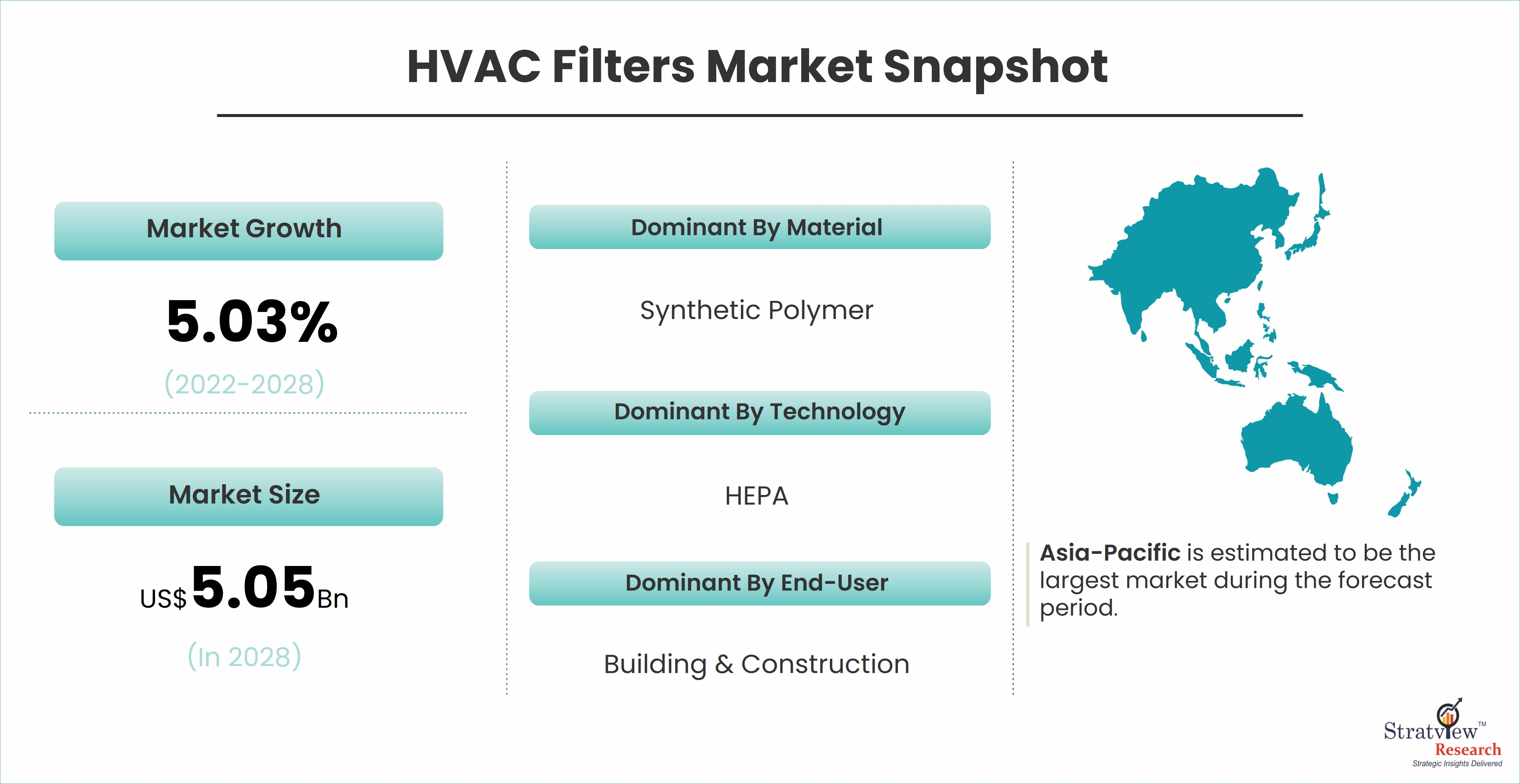According to Stratview Research, the HVAC filters market size was valued at USD 3.58 billion in 2021 and is likely to grow at a CAGR of 5.03% during 2022-2028 to reach USD 5.05 billion in 2028.
When it comes to improving indoor air quality and ensuring the efficient operation of your HVAC system, choosing the right filter is crucial. However, the world of HVAC filters can be daunting, with various acronyms and ratings like MERV and HEPA. In this article, we'll demystify HVAC filter ratings, helping you understand what they mean and how to make an informed choice for your indoor air quality needs.
MERV - Minimum Efficiency Reporting Value
MERV stands for Minimum Efficiency Reporting Value, and it is a standard rating used to assess the efficiency of HVAC filters. MERV ratings typically range from 1 to 16, with higher numbers indicating better filtration performance. Here's what different MERV ratings mean:
MERV 1-4: These filters offer minimal filtration and are typically found in residential systems. They capture large particles like dust and pollen but may not be effective against smaller contaminants.
MERV 5-8: Filters in this range provide better filtration and are suitable for residential and some commercial applications. They capture smaller particles, including pet dander and fine dust.
MERV 9-12: Filters with these ratings are highly efficient and can capture even smaller particles, such as mold spores and smoke. They are commonly used in commercial settings, including hospitals and schools.
MERV 13-16: Filters in this category offer the highest level of filtration and are often used in hospitals, laboratories, and other environments with strict air quality requirements. They can capture particles as small as 0.3 microns.
HEPA - High-Efficiency Particulate Air
HEPA, or High-Efficiency Particulate Air, is a filtration standard that surpasses MERV ratings. HEPA filters are renowned for their exceptional performance in capturing very small particles, including bacteria and viruses. To meet the HEPA standard, a filter must capture at least 99.97% of particles sized 0.3 microns or larger. HEPA filters are commonly used in healthcare settings, cleanrooms, and environments where the highest level of air quality is essential.
Understanding the Application
Choosing the right filter rating depends on your specific indoor air quality needs and the application. Here's a breakdown of common scenarios:
Residential Use: For homes, a MERV rating between 8 and 11 is typically sufficient to maintain good air quality by capturing dust, pollen, and pet dander.
Commercial Buildings: Commercial settings like offices and schools may benefit from filters with MERV ratings between 9 and 13 to provide a healthier indoor environment.
Hospitals and Labs: High-risk environments, such as hospitals and laboratories, often require HEPA filters (MERV 17-20) to ensure the strictest air quality standards are met.
Balancing Filtration with Airflow
While higher MERV-rated filters provide superior filtration, they can also restrict airflow. It's essential to find a balance between filtration efficiency and maintaining proper airflow in your HVAC system. If your system is not designed to handle a high MERV-rated filter, it may lead to decreased efficiency and increased energy consumption.
Regular Maintenance
Regardless of the filter rating, regular maintenance is essential. Filters should be replaced according to manufacturer recommendations to ensure they continue to function optimally.
Conclusion
Understanding HVAC filter ratings like MERV and HEPA empowers you to make informed choices to improve indoor air quality. The right filter rating depends on your specific needs, whether at home, in a commercial setting, or a high-risk environment like a hospital. By demystifying filter ratings, you can breathe easier knowing you've taken steps to ensure cleaner, healthier indoor air.


